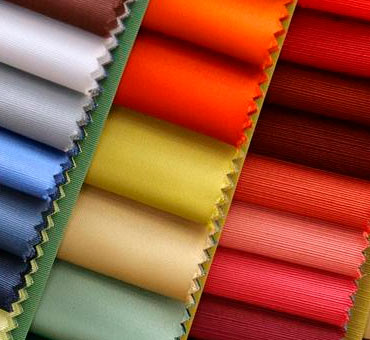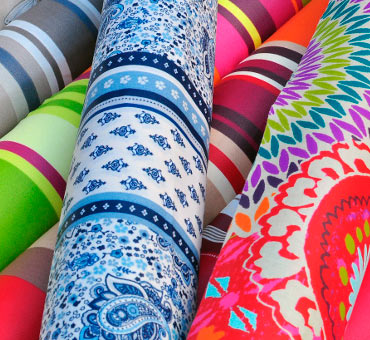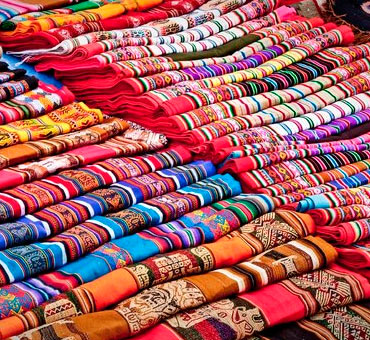The right combination of fabric and dye is the first step on the road to a beautiful and durable print. We have specialised in printing on polyester and polyester blends, and we always recommend using the transfer technique for these fabrics.
Heat transfer printing is a two-step printing technique, which involves a dye sublimation process. We work with disperse dye inks which are the only colorant with the ability to sublime.
The sublimation process
The ink printed on the transfer paper turns from a solid into a gas without becoming liquid at any time. The process takes place in the calender at high temperatures.
At the carefully set temperature, the molecules of the polyester fibres open. You may say that the fibres will soften and let the ink (turned into gas) come through.
When removing the polyester fibres from heat after the sublimation, the molecules of the polyester fibres will settle again and absorb the ink completely. This fusion between the fabric fibres and ink makes this technique incredibly reliable. The colour is absorbed in the fabric instead of sitting on the surface of the fabric like other textile printing techniques.
The colour fastness is intact and there is no need for further finishing or washing of your fabric subsequent to the sublimation process. Some specially treated textiles, i.e. Trevira CS, however, will become stiff in the calender and do need washing to obtain their original feel.
What are disperse dyes?
• Disperse dyes are insoluble in water after print or have a very low solubility in water
• Disperse dyes are used for dyeing of synthetic fibres, especially polyester
• Disperse dyes have a good light fastness with an assessment of 4-7
• The washing fastness is good with an assessment of 4/5-5
• The colours undergo no chemical modification during printing
Ghosting – shades on the fabric after printing
Ghosting is the term used for describing a blurred pattern or unwanted shades on the fabric after printing. The most common cause of ghosting is the transfer paper quality. If the transfer paper is very thin, as the paper used for conventional textile printing, the ink risks penetrating the paper and causing trouble. The transfer paper in our digital printers is thicker and denser, and we do not have any problems of ghosting.
Hasty rolling may also cause ghosting on the fabric. It is also important to leave time for adequately cooling of the fabric before rolling. Our equipment and procedures carefully allow for space and time for cool-down and quality control subsequent to the sublimation process in the calender.
We have not had any incidents of ghosting in our digital print production.
Bleeding – colours “bleeding” on the fabric
Bleeding does not occur when printing on pure polyester.
In principle, bleeding may occur in all types of polyester blends, but we mostly encounter the challenge in some polyester blends with elastane (lycra).
We can easily print on a polyester fabric blended with elastane. We just need to take certain measures to ensure a satisfactory result. Most often, the elastane lies on one side of the fabric and in that case, we will of course make sure to print on the other side.
The elasticity of elastane (lycra) comes from softeners. During the print process, the grease of the softener may cause the colours to “bleed”. Normally, a thin protective polyester thread is spun around the fine lycra thread. However, it may be difficult to wash out the added grease between the threads and therefore, bleeding may occur.
We always test new fabric to learn how the ink reacts to the fabric in question.


